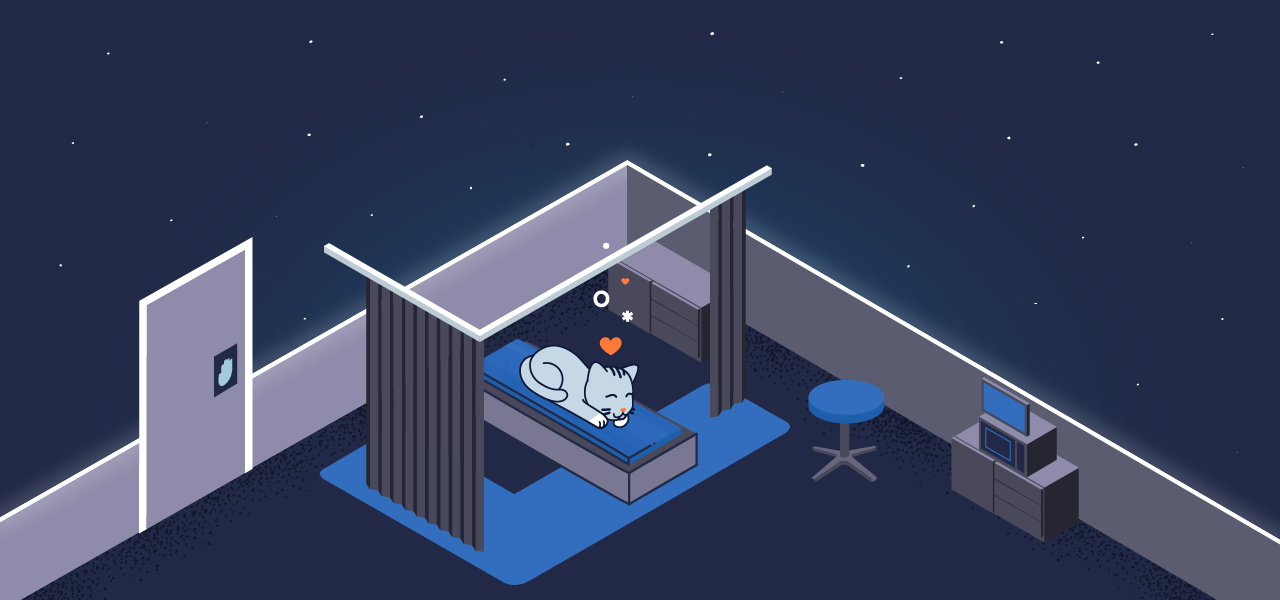We’ve learned a lot from installing Instinct at more than 100 of the world’s most progressive veterinary hospitals.
One of the decisions that every hospital faces is how to charge clients for patient hospitalization.
We’ve seen it all:
- Every hour to once per day
- Splitting into doctor and nursing fees
- Levels from 1 to 10
- Flat one-time options
- And everything in between.
Throw in surcharges for special wards (isolation or ICU), splitting doctor production, and the fact that most centers are teaching centers with frequent employee churn, and it’s the perfect storm for missed charges.
It’s Time to Rethink Outdated Complexity
👵👴 In the olden days, complexity was the norm. Everything was manual anyway, since existing veterinary software couldn’t automate. This is where most hospitals still sit today.
👩🚀👨🚀 But modern hospitals are rethinking hospitalization in the name of simplicity, fairness, and revenue capture. Plus, you have advanced tools you’ve never had before to help open up a world of streamlined automation for timed charges.
2 Modern Options for Hospitalization Charges
After years of trial and triumph, we’ve watched the following succeed everywhere from big corporate groups to independent multimillion-dollar centers.
In the two hospitalization examples below, we’ll use every 12 hour (q12h) hospitalization charges because the majority of Instinct hospitals charge this way. But you could change the frequency to every 6 or 24 hours with little consequence.
Without any further ado, here are the secrets we share with all new Instinct hospitals.
Option 1: Rolling Hospitalization
This is a simple q12h hospitalization charge that starts at check-in and drops into the invoice automatically every 12 hours thereafter.
🔑 Here’s the key: Each hospitalization charge carries the exact quantity of “1.” There is no more fractionating these charges.
🔖 To get this right, label your hospitalization charge with an appropriate name that clearly explains how it works: Hospitalization (1 to 12 hours).
😺 This makes things simple, easy for doctors to estimate, and fair for clients. Hospitalization starts when the patient enters the hospital at 11 am, and the charge is applied every 12 hours (11 am and 11 pm) until the patient goes home.
🤖 Choose this option and let software fully automate it. And yes, you can create corresponding levels, nursing, isolation, ICU, and fluid pump charges that can all be automated with it.
🚧 Roadblock alert: One potential downside to this approach is splitting fees between shifts for production tracking. If you choose this option, like many do, you’ll take a “what goes around comes around” approach. This means doctors who take over cases mid-hospitalization level don’t get production until the next charge comes due. See how this process works.
Option 2: Shift-Timed Hospitalization
This is a variation of option 1 for hospitals that prefer to keep production tracking lined up with shift changes. This option is a simple q12h hospitalization charge that automatically drops into the invoice at set times (eg, 8 am and 8 pm) daily.
🔑 Here’s the key: Each hospitalization still carries the exact quantity of “1” (no fractionating charges), but with this option, we recommend a new “Hospitalization setup fee” that automatically charges one time at check-in to cover the first (and potentially lost) hours before the next 8 am and 8 pm.
🔖 To get this option right, label your hospitalization charge with an appropriate name that clearly explains how it works: Hospitalization (1 to 12 hours) and Hospitalization Setup Fee. The setup fee is a one-time charge and can be priced similarly to the q12h hospitalization charge.
😺 This still keeps things simple and easy for doctors to estimate but can be designed to perfectly account for productivity. Also, it is neatly aligned with the work the team does, since there is extra work in setting up new patient hospitalization. A hospitalization setup fee drops into the invoice immediately when a patient enters the hospital at 11 am. Then, the first hospitalization starts at 8 pm and drops in every 12 hours (8 am and 8 pm) until the patient goes home.
🤖 Instinct can fully automate this as well! And yes, you can create corresponding levels, nursing, isolation, ICU, and fluid pump charges (with or without similar setup fees) that can all be automated with it.
🚧 Roadblock alert: The one potential downside that we’ve heard with this option is that it lends to doctors unintentionally batching discharges between the busy 6 pm to 8 pm hour daily. This is easy to overcome with workflow (ie, schedule your discharges).
There are likely lots of other ways to charge for hospitalization. But we’ve seen the above work well in the trenches.
Want to dig in more, check out our advanced hospitalization charging Q&A!
